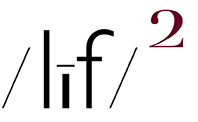from Castle Rock ~ Blue Mt. Lake, NY (embiggenable) • 8x10 Arca Swiss w 8x10 color negative film
guideboat ~ Blue Mt. Lake, NY (embiggenable) • 8x10 Arca Swiss w 8x10 color negative film
(embiggenable) • iPhone
(embiggenable) • iPhone
George Eastman opined:
"Light makes photography. Embrace light. Admire it. Love it. But above all, know light. Know it for all you are worth, and you will know the key to photography."
iMo, this quote, coming from a guy who employed hundreds of research scientists who knew light and how to make outstanding light sensitive emulsions, can be understood in a number of ways .... Eastman's research department certainly understood, from a technical point of view, that "light makes photography". Those who make pictures came to understand it from an aesthetic point of view and worked to "embrace light" as a pictorial meme employed to enhance a picture's visual impact in ways both subtle and dramatic.
Numbered amongst the light from an aesthethic POV picture makers, there is a subgroup of landscape picture makers who, to my eye and sensibilities, "admire" and "love" the light to the point of being a fetish. These picture makers often describe their picture making activitiy as "chasing the light" and by their definition, the light is that which is both dramatic and colorful or which emphasizes the sturm und drang of the natural world. I have never been a member of this club.
That written, there was a time when I did pursue a particular type of light .... the soft and color subtle light found during the time of day called the gloaming or as-using my favorite descriptor-entre chien et loup (between the dog and the wolf). That picture making time was during the late 70s>mid-80s when I toted one of my 8x10 view cameras about my hometown and the Adirondacks. I did so because, at that time, that was what "serious" fine art color picture makers did.
In order to capture the subtle quality of the light and color, my film of choice was 8x10 Type L (long exposure) color negative film. Even though Type L film was manufactured to compensate for the color reciprocity failure due to long exposures (60-120 seconds), I was pushing the envelope out to 10>20 minute exposure times* due to my use of an f64 aperture setting.
Although I still have my 8x10/4x5 view cameras and lenses, for a variety of reasons those days are gone. Over the last 2 decades, I have increasingly let "the light" chase me and, when it catches me, I make pictures of it. To be honest, I subscribe to a picture making idea best described by Brooks Jensen:
"There is no such thing as "good" or "bad" photographic light. There is just light."
*FYI, something I did from time to time, during a 20 minute exposure, was to walk through the scene I was picturing. I never detected any impact on the negative of such activity. I just did it to be a wise ass.
